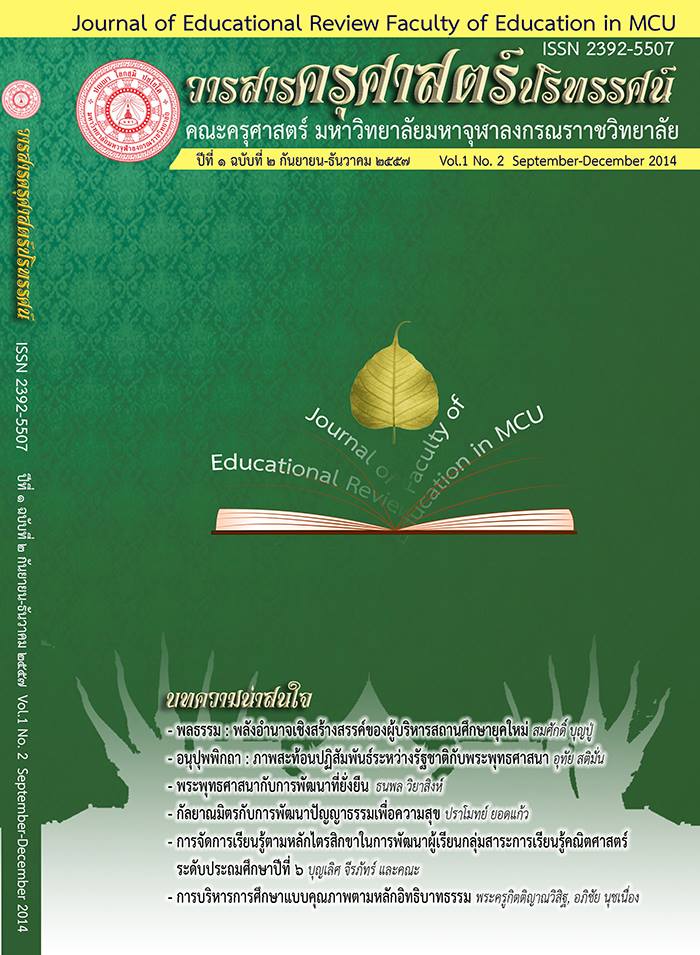Learning Management Model Based on Buddhist principle
Main Article Content
Abstract
There are ways for human beings to learn, such as perceiving, learning, studying or applying. These lead to systematic learning. Human could have a perception from sense-objects and sense-organs. When both sense-objects and sense-organs were in contact, such as seeing by eyes, hearing by ears, smelling by nose, tasting by tongue, feeling or touching by body and getting mind-objects by mind. There were three stages of perception: conscious, subconscious and unconscious. When there was perception, learning could happen. Human learning came from teacher, text and listening. Learning system integrated with the Four Paths to Accomplishment could make the learners bring what they learnt into use in occupation and daily life.
Article Details
ทัศนะและความคิดเห็นที่ปรากฏในบทความในวารสารฉบับนี้ถือเป็นความรับผิดชอบของผู้เขียนบทความนั้นเพียงผู้เดียว และไม่ถือเป็นทัศนะและความรับผิดชอบของกองบรรณาธิการ
กองบรรณาธิการขอสงวนสิทธิ์ในการคัดเลือกบทความลงตีพิมพ์และจะแจ้งให้เจ้าของบทความทราบหลังจากผู้ประเมินบทความตรวจอ่านบทความแล้ว
ต้นฉบับที่ได้รับการตีพิมพ์ในวารสารครุศาสตร์ปริทรรศน์ คณะครุศาสตร์ มหาวิทยาลัยมหาจุฬาลงกรณราชวิทยาลัย ถือเป็นกรรมสิทธิ์ของคณะครุศาสตร์ มหาวิทยาลัยมหาจุฬาลงกรณราชวิทยาลัย ห้ามนำข้อความทั้งหมดหรือบางส่วนไปพิมพ์ซ้ำ เว้นเสียแต่ว่าจะได้รับอนุญาตจากมหาวิทยาลัยฯ เป็นลายลักษณ์อักษร
References
Model, Learning management, Buddhadhamma


